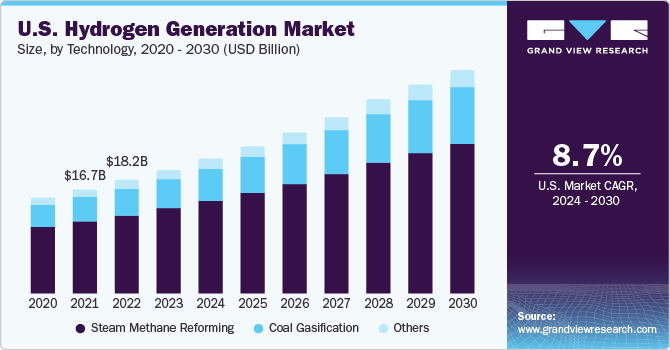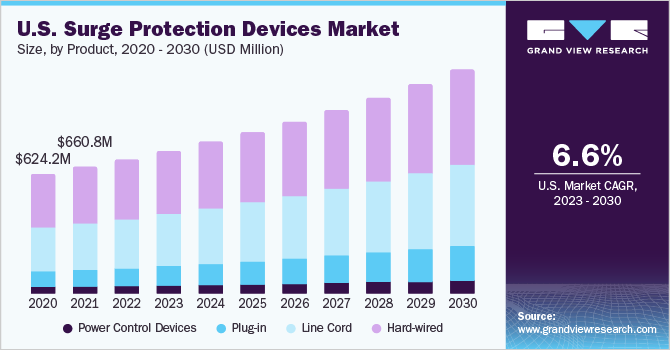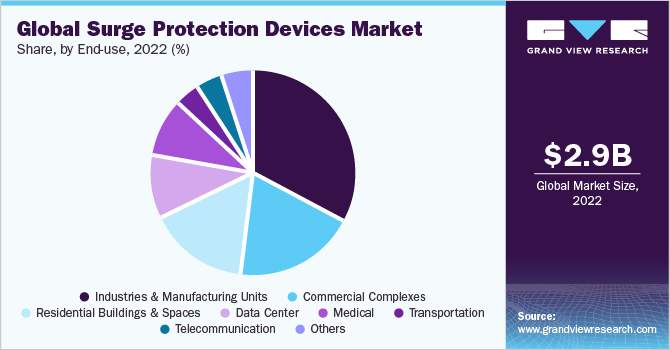Gas Detection Equipment Market Growth & Trends
The global gas detection equipment market size is expected to reach USD 10.66 billion by 2030, registering a CAGR of 11.0% from 2023 to 2030, according to a new report by Grand View Research, Inc. The rapidly expanding necessity for facility safety along with worker safety throughout the world is driving the market expansion of gas detection equipment. At the same time, the rise in need to comply with the stringent safety and environmental rules is a significant factor driving the growth of the gas detection equipment market. According to the industry guidelines, it is critical to restrict workers occupational exposure to hazardous gases. As a result, gas detectors can be deployed in the hazardous workplaces.
Several companies across the globe are focusing on introducing Bluetooth-based gas detection equipment, which is expected to create new opportunities for market growth in the coming years. For instance, in October 2021, Honeywell International Inc. launched two new Bluetooth connected gas detectors that can deliver continuous monitoring for dangerous gases in fog, rain, snow, and other harsh conditions. The launch was expected to help facilities keep their oil & gas, petrochemical, chemical and other workers and industrial sites safe.
Rising workplace accidents have raised worker awareness of workplace safety and health. For instance, in June 2022, thirteen people were killed and approximately 265 were wounded at Jordan’s Aqaba port, due to a toxic gas leakage.As a result, firms are investing in the adoption of comprehensive safety measures in order to provide a safe working environment. This has resulted in employee retention while conforming to tight requirements. Furthermore, it has aided brand image among customers, thereby supplementing good will. This has increased the demand for improved gas detection technology in factories, plants, and other industries.
The COVID-19 pandemic is anticipated to favorably impact the market growth in the near future. Post the COVID-19 pandemic, the use of Vaporized Hydrogen Peroxide (VPH) to disinfect workplaces, particularly those built for continuous human occupation, is projected to expand. If VPH is not completely eliminated from the region, it might be harmful to human health. Workers exposed to VPH may experience sore throats, respiratory irritation, skin irritation, watery eyes, and internal organ damage according to the Centers for Disease Control and Prevention. Consequently, following the pandemic, the need for installing Hydrogen Peroxide (H2O2) gas monitors within offices and work places to avoid hydrogen peroxide exposure is projected a high growth.
Request a free sample copy or view report summary:
Gas Detection Equipment Market Report
Gas Detection Equipment Market Report Highlights
- In terms of product, the fixed gas detector segment is expected to retain its dominance over the forecast period. As companies become more aware of the hazards connected with hazardous gases in the workplace, the requirement for safe and healthy working conditions is a primary driving force behind the rising usage of fixed gas detectors.
- In terms of technology, the infrared gas detection technology segment dominated the market in 2022 and is expected to witness growth over the forecast period. Primary driving factor propelling the segment growth is the maintenance-free nature of infrared gas detectors.
- In terms of end-use, the industrial segment dominated the market in 2022. The rising number of mine deaths caused by a shortage of oxygen is expected to drive up demand for gas detectors in the industrial end-use industry.
- Increasing usage of gas detection equipment in emerging economies such as India and China is likely to generate development possibilities for gas detection equipment market participants in the Asia Pacific




